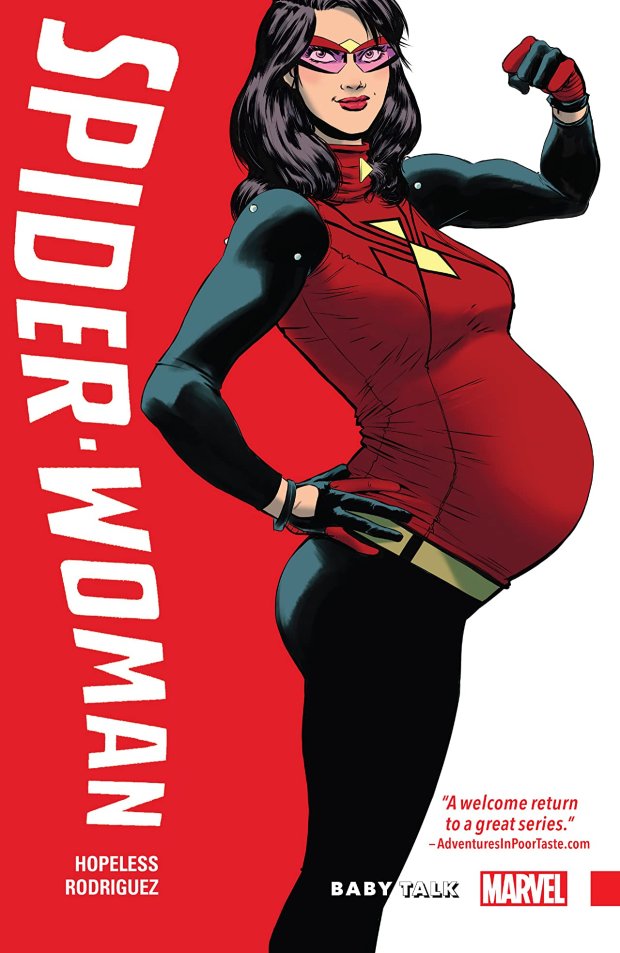by Dennis “Hopeless” Hallum, Javier Rodriguez, Alvaro Lopez, Travis Lanham
Collects Spider-Woman #1-5
Wow – I was surprised to see such high ratings for Baby Talk on Goodreads, and then each issue I became more and more surprised by just how fantastic and delightful this first installment of Spider-Woman was. I’ve been aware of Jessica Drew, but this was my first solo series of the character.
And part of it was, to be perfectly honest, my assumptions of a male writer on a story about a heavily pregnant superhero. I was so delighted to find out how wrong I was. Jessica is in her final weeks of pregnancy, and when she finally takes Carol’s advice to visit an intergalactic hospital for a maternity visit, things go awry to say the least!
I don’t have children myself, but my best friend did just have a baby, so I believe I have some small authority to be impressed by how well represented Hallum represents the complexities of pregnancy and childbirth. Many of the well-worn jokes are there, but not at the expense of Jessica. If anything, it shows us exactly who Jessica is as she’s faced with the dilemma of protecting others at the potential expense of her unborn child. Jessica’s relationship with Carol also shines here, and makes me real antsy for Jessica to show up in the MCU already.
Overall, Rodriguez and Lopez’s artwork here is fantastic. The action scenes with a hugely pregnant Jessica could have been over the top and funny, but actually showed a lot of respect and honor for Jessica. That being said, there are some great humorous moments that they land as well. I loved the issue with Jessica exploring the hospital – there were some beautifully creative scenes that made this arc stand out – and they also hit the emotional beats in the final issue.
spoilers this paragraph. And much of the aspects Hallum focuses on, especially Jessica as a single mother, are usually left out of pregnancy storylines – he establishes early on (in a hilarious way) that it’s unimportant who the father is. Jessica has a C-section, and after giving birth, Rodriguez does a lovely job of showing her breastfeeding (in front of Carol!) without making a big deal out of it. And the final issue is just fantastic, showing the mess of being a new parent and how friendships change. Jessica leans on fellow Roger (the now-reformed Porcupine) for advice, one of the most authentic scenes about parenthood I’ve ever seen in a comic; her fear of leaving her baby and then integrating her motherhood identity, while fast for one issue, still felt authentic.
For all the authenticity, my one gripe with the book is how Jessica kept calling the other pregnant beings in the intergalactic ward “ladies” and “women,” especially after wondering if “aliens” was offensive. I seriously doubt all other alien species have the same genders we do, and even among humans, not just women have children (shout out to trans men, non-binary, gender-fluid and other gender-queer folks especially during Pride Month.) Even Rodriguez showed a pregnant alien in the background of one panel who presents more male than their partner:
Regardless, this was just a delight to read – an easy five stars! Looking forward to volume two.





